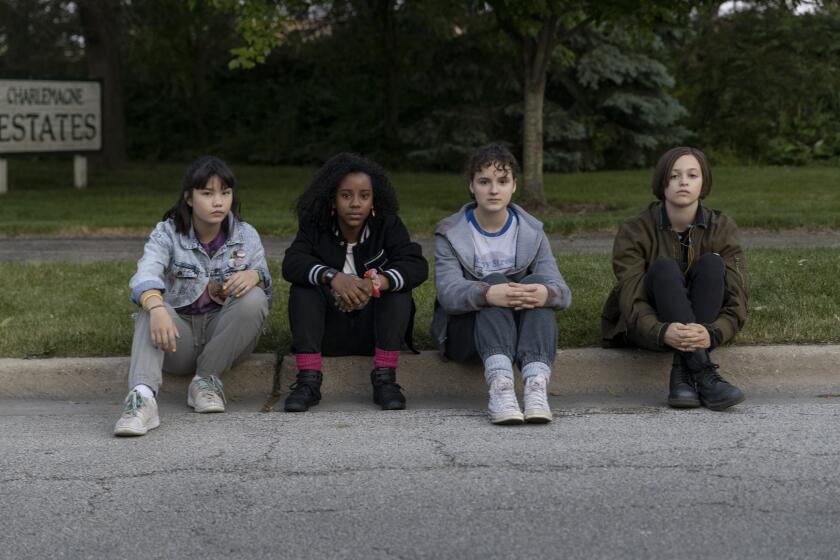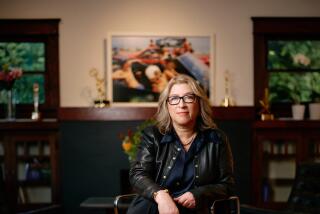Making ‘Paper Girls’ ‘Wikipedia-proof’ meant change. Here are the creators’ favorites
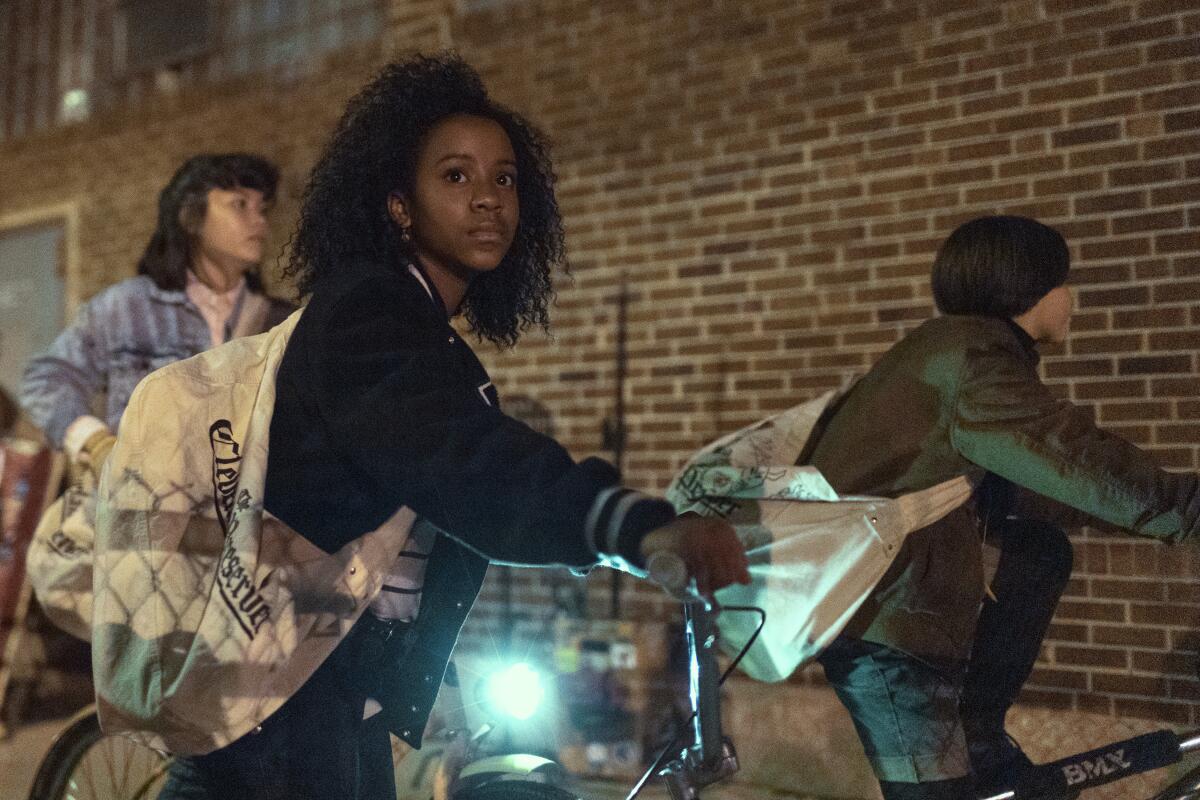
- Share via
This story contains spoilers for “Paper Girls” on Prime Video.
“Paper Girls” features time travel, opposing future factions in a secret time war, mysterious technology and even giant robot battles, but at its core it is a coming-of-age story about four 12-year-old girls.
Based on the Eisner Award-winning comic book series by Brian K. Vaughan and Cliff Chiang, the Prime Video series, which debuted Friday, follows four paper girls who find themselves thrown into the future after they encounter some mysterious teenagers while delivering newspapers during the predawn hours on the morning after Halloween in 1988.
A quartet of 12-year-olds gets caught between warring time travelers in ‘Paper Girls,’ one of the year’s best TV shows.
As Erin Tieng (Riley Lai Nelet), Mac Coyle (Sofia Rosinsky), Tiffany Quilkin (Camryn Jones) and KJ Brandman (Fina Strazza) try to figure out what has happened to them, they eventually learn about an ongoing time war and meet future versions of themselves in the process.
“One of the great things about having 12-year-old protagonists is that at 12, you’re really feeling things so intensely, and you’re starting to ask yourself, who do I want to become?” said Chiang in a recent video call. “That’s a question that follows you throughout your life, even when you’re our age. People just are constantly figuring it out. I think that’s what you don’t realize at 12, that it’s a journey.”
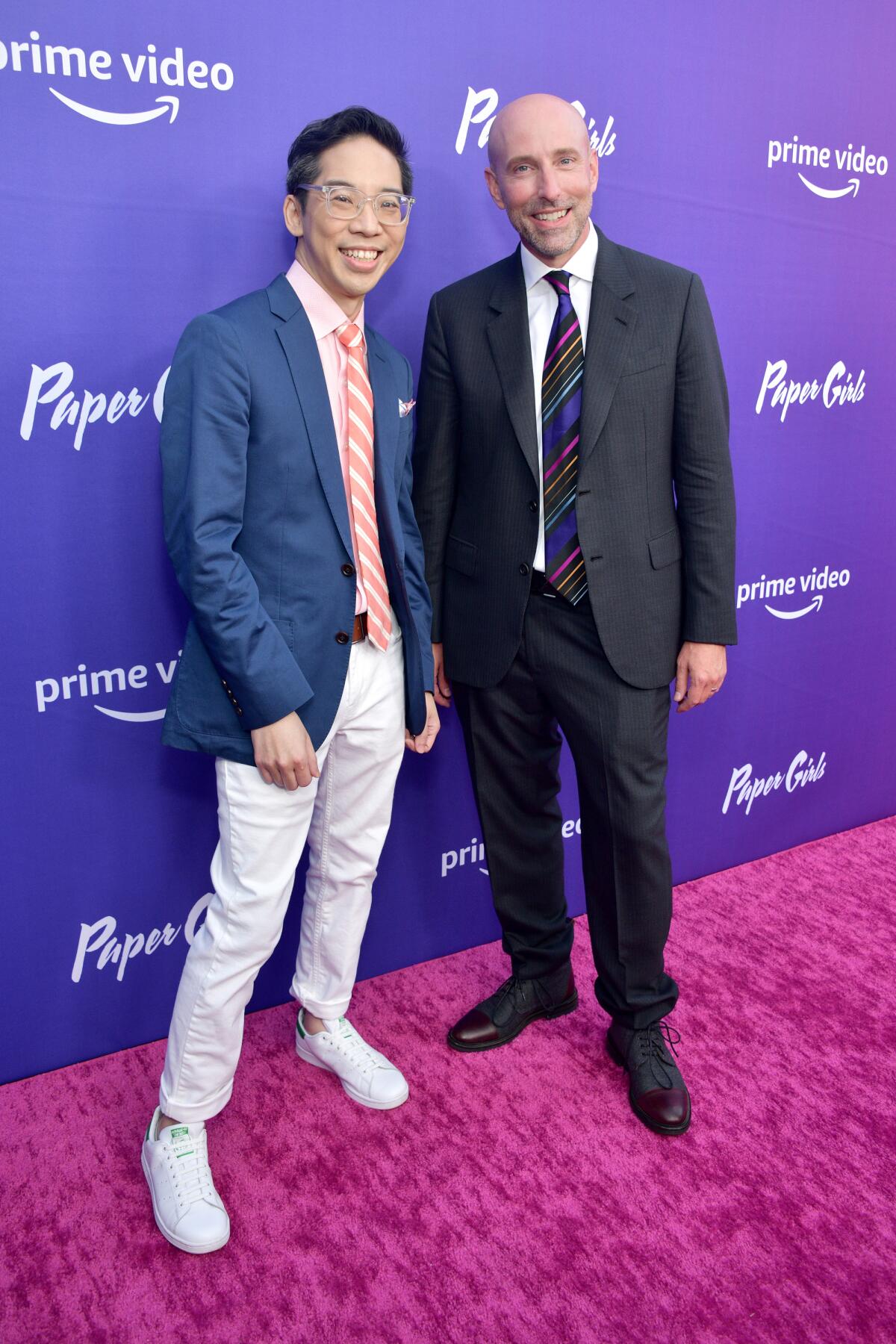
Vaughan and Chiang, who served as executive producers on the adaptation, explained that they shared notes detailing extensive backstories, as well as the art and visual inspirations, early on in the adaptation process but encouraged the team to make changes to make the show’s story their own. And as touched as they are by the reverence for the original comic book series, they are quick to credit and praise everyone from the cast to the writers and the production staff for the version of the story brought to life onscreen. (The series was developed for television by Stephany Folsom, and its showrunners include Christopher C. Rogers and Christopher Cantwell.)
For Vaughan, the key elements he wanted the show to retain from the comic book series was the “four girls and their relationships and who they are at the core” as well as the antinostalgia for the era.
“We didn’t want to do something that was about looking back at the ’80s with rose-colored glasses,” said Vaughan. The book takes “a hard look at this difficult place we came from. … I love that the show never shies away from that. It can be difficult, especially in a show with young protagonists, to show overt homophobia, to show the antisemitism, to show the bigotry of that time, but it would have felt fake to just gloss over it.”
Fans of the comic book series will notice a number of changes the show makes to the source material — beyond the understandable absence of a familiar fruit-shaped logo on future technology — including the introduction of original characters and events. But both comics creators agree that “what [the show] preserves is the emotional road map of the story,” and they welcomed the “expansion of the original idea” as long as it remained true to the heart of their story.
Part of the goal, explained Vaughan, was for the show to be “Wikipedia-proof,” so people would not be able to just look up what happens next.
“Our showrunner Chris Rogers says something that I love,” said Vaughan. “He says he didn’t want to do a karaoke version of our book, which is just going beat for beat … and I appreciate that. As a viewer of this show, I want to be surprised even though I wrote this thing.”
Vaughan and Chiang break down some of their favorite surprises from the show below.
Introducing Larry
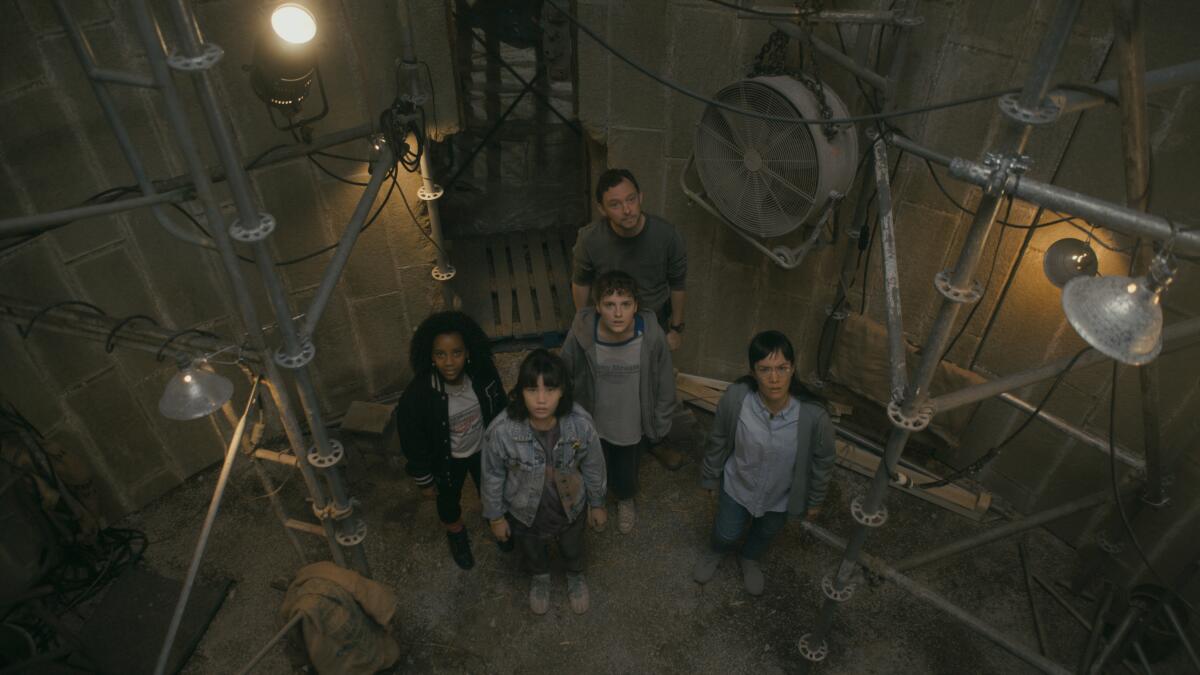
One of the characters original to the TV series is Larry Radakowski, a member of the STF underground whom the girls first encounter in 2019. Larry is a present-day ally to the teenagers from the far future who believe there should not be any rules to time travel. They want the freedom to change history, and Larry believes in their cause. He helps the STF’s time-war efforts by guarding a secret weapon that’s been hidden on his farm and keeping a record of rifts in time that can be used for time travel. (His closest comic-book counterpart is perhaps a newspaper cartoonist named Charlotte Spachefski.)
“Larry is extraordinary, hilarious and unexpected,” said Vaughan. “He’s the kind of character where Cliff and I looked at each other and were like, ‘I wish we had someone like him in the book.’ He just gives such a new dimension for the girls to play off of. He’s incredible.”
Spending time with Mac’s brother
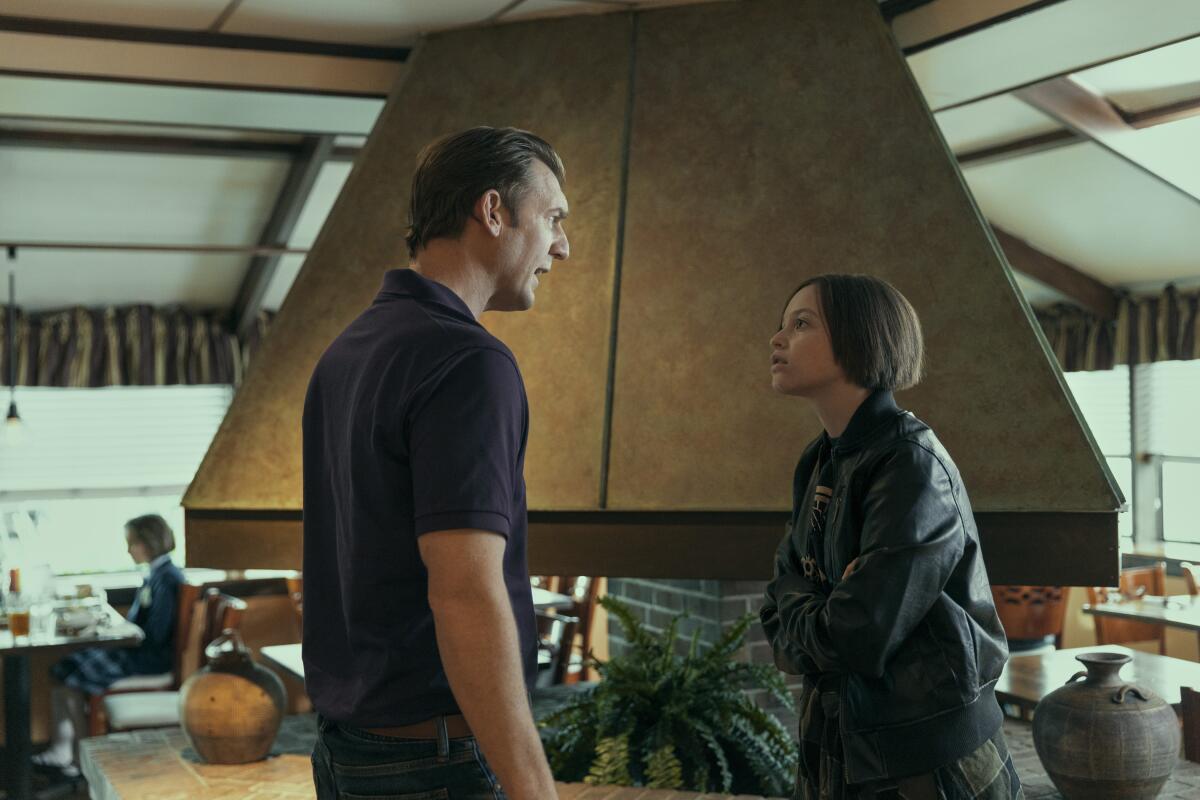
In the comics, Mac learns her future self has already died when she heads to what should be her family home and encounters a stranger. But in the series, Mac discovers her older brother, Dylan, has grown up to be a doctor in the future and seeks him out and gets to spend some quality time with him.
“Mac’s brother is really something special,” said Vaughan. “We only hinted at him as a sort of mean-spirited, jerky older brother, which he is when we’re first introduced to him on the show. But what a clever idea to get to see how he has changed and [how] what happened to his sister … has made him grow. It felt so organic to everything we were trying to pull off in the comics.”
The catalyst for KJ’s self discovery
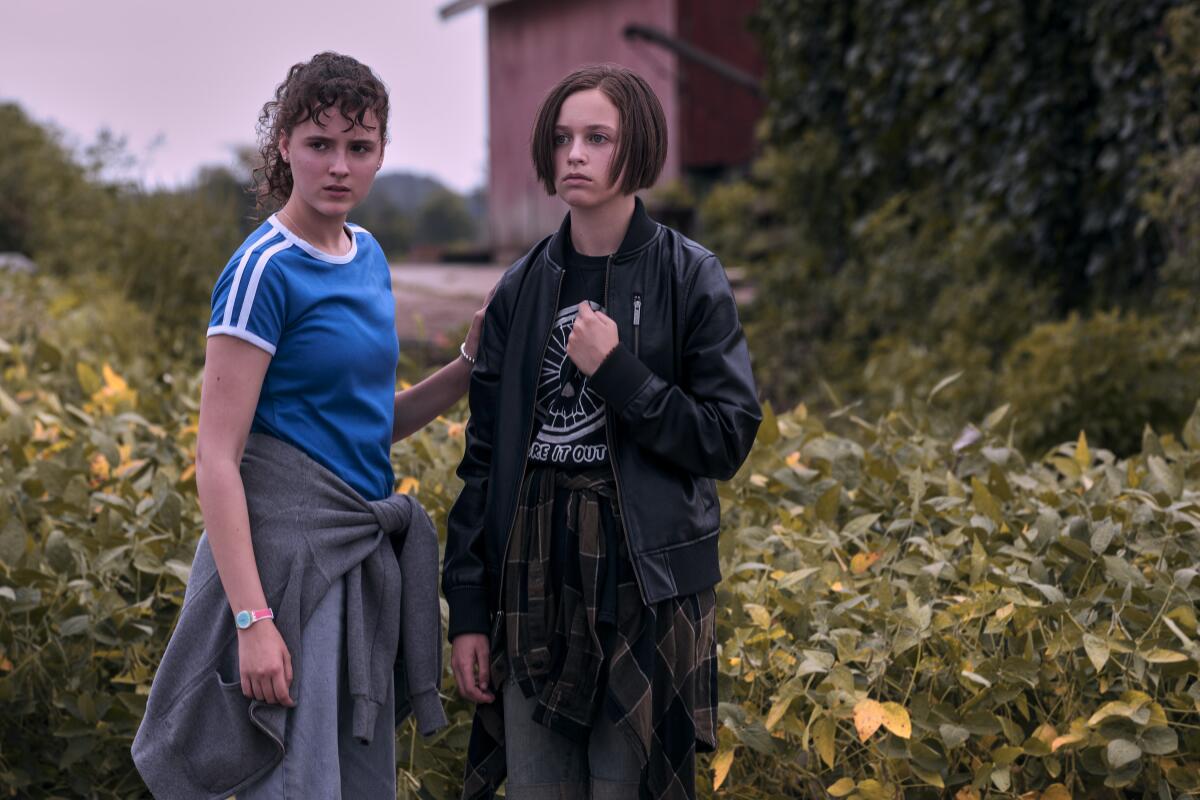
Because the series doesn’t exactly follow the time-travel itinerary set in the comics, KJ learns about her future in a completely different way. In the comics, KJ gets flashes of future events she will experience by coming into contact with a mysterious creature from the fourth dimension. She sees a vision of herself kissing another girl, and she quickly processes what that means on her own. But in the series, KJ meets and has conversations with her future self’s girlfriend.
“One of my favorite scenes [in the show] is when KJ goes to the movie theater,” said Chiang. “It’s such a beautiful, poetic scene where she’s able to talk to her older self’s girlfriend about art and about love. It’s such a great scene because it really encapsulates all the discovery you make at that age, being 12, and finding things out about yourself and what you want to become.”
That Prioress twist
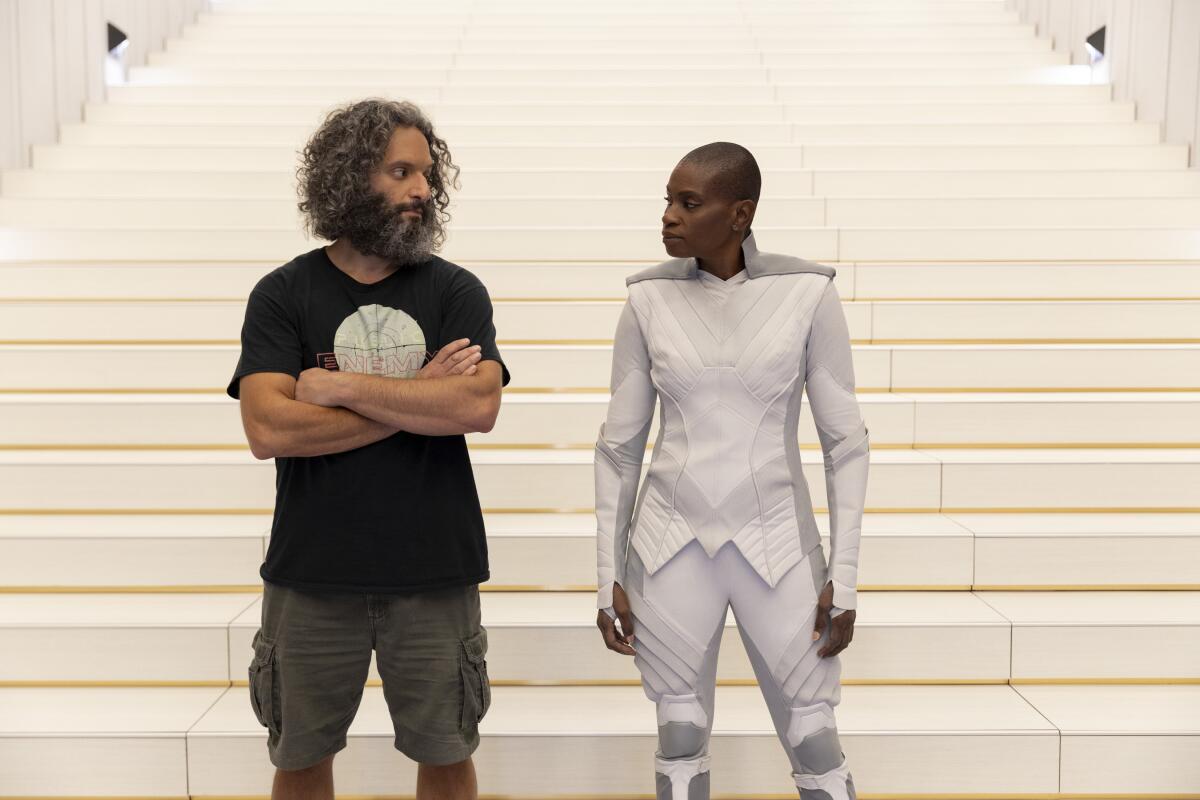
The core Paper Girls quartet are not the only ones whose stories and arcs have been expanded for the TV series. In the comics, Prioress is one of the “old-timers” (known as the Old Guard on the series) who believes history and time should not be tampered with. Prioress (Adina Porter) and her allies are from the future, but not as far in the future as the teenagers of the STF who don’t believe in restrictions to time travel. Her work involves trying to maintain the sanctity of the timeline, which in the comics includes the occasional giant mecha robot fight. In the series, Prioress does a lot more gumshoe investigating.
“Prioress was originally gonna be a smaller character in the comic, but as soon as I saw Cliff’s design, I was like, ‘Oh, no, this is incredible, and she’s going to be vitally important to the story,’” said Vaughan. “I think similarly, the character kind of grew in the show, where they realized she isn’t just going to be an arch-villain chasing down these young women. She has a complicated emotional arc of her own.”
More to Read
The complete guide to home viewing
Get Screen Gab for everything about the TV shows and streaming movies everyone’s talking about.
You may occasionally receive promotional content from the Los Angeles Times.
